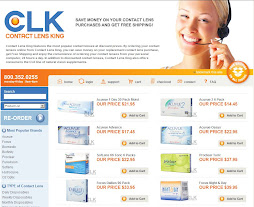Despite all the information available about contact lenses, there is still one area where misconceptions crop up concerning the nature of contacts and their use: prescriptions and their expirations.
Eye doctors and contact lens sellers remain surprised that a good number of people continue to ask why they need a prescription to wear contact lenses. In cases like these, the prevailing notion seems to be that contacts are somehow just a fashion accessory and not the controlled medical devices that they are. It is true that patients have been given greater freedom to shop around for their lenses since the federal government required that contact wearers have a copy of their prescription. However, this freedom may have fostered assumptions that contacts have become less controlled. No one would think of taking a medication to treat a serious illness without benefit of a doctor’s prescription because that medication must be monitored so it will do no harm. The same holds true for contacts. A lens that fits poorly, is not perfectly matched to your vision power, or is made from material not best suited for your eyes will cause problems. Not only is discomfort a most likely result, but inflammation, infection, and permanent damage to eye tissue are also risks.
Once you have the proper prescription it is important to remember that it is subject to expiration, in most cases after one year. Your eyes may continue to feel good and lens wear remains comfortable, but there could be microscopic changes in your eye health that are not noticeable. An annual exam with your eye doctor assures that any potential problems with your eyes are caught and corrected before they become serious. These regular exams also keep up with how your lenses are performing and allows for any required updates in regards to power, size, material, or design.
In addition to prescription expiration, soft contact lenses themselves have a time limit placed on them. Despite the airtight packaging used on most brands of soft contacts, the passage of time may weaken or compromise the seal. This leads to contamination of the sterile saline solution and the lens inside. Expiration dates can be found on the box and on the lens’ foil wrapper. Dates are printed in a year-month format, meaning the contacts within can be used until the last day of the month in the calendar year indicated (e.g. 2014/12 means you can use the lenses until December 31, 2014). Once an expiration date has been reached, discard the lenses immediately and obtain fresh ones.
Contact lenses provide great convenience and comfort regarding vision correction, but it is important to remember that they also impact a most sensitive part of our bodies, the eyes. Regular and timely visits with your eye doctor are necessary to maintain eye health and to make sure they are enhanced--not harmed--by the contacts we choose.
Friday, June 18, 2010
Coming to Terms with Contact Lenses’ Prescriptions and Their Expiration
Subscribe to:
Post Comments (Atom)





1 comment:
看看blog調整心情,又要來繼續工作,大家加油......................................................................
Post a Comment